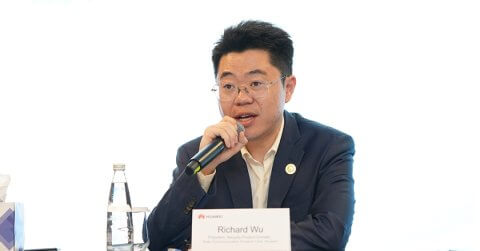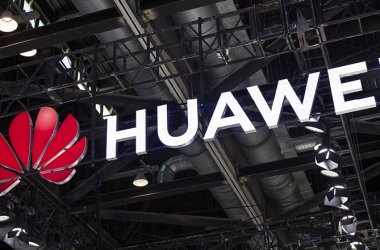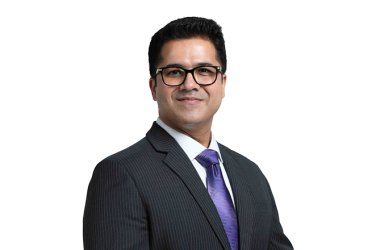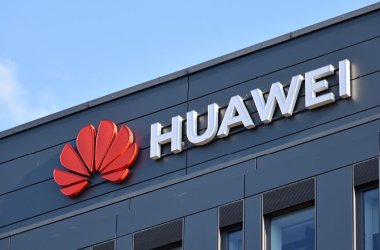
At a media briefing held during GISEC GLOBAL, Huawei emphasised the critical need for a unified and proactive approach to cybersecurity in the face of increasingly sophisticated threats.
Richard Wu, President of Security Product Domain, Data Communication Product Line, Huawei, delivered key insights into the evolving threat landscape and Huawei’s innovative solutions.
The briefing, themed “Establishing a Unified Cybersecurity Foundation to Safeguard the Expanding Digital and Intelligent Landscape,” brought together industry experts and media representatives to discuss the challenges and opportunities presented by the rapid advancement of AI and digital transformation.
Wu highlighted the growing sophistication of cyberattacks, driven by the increasing use of AI by malicious actors. “In today’s increasingly complex threat landscape, where cyber-attacks are more frequent, automated, and covert, cybersecurity must evolve from reactive to proactive threat containment”, Wu stated. He pointed to the alarming statistics, noting that in 2024, AI-driven network attacks increased by 50% year over year.
He further elaborated on the speed and sophistication of these attacks, citing examples of AI tools capable of generating thousands of hyper-realistic phishing emails in minutes, a task that would take humans days to accomplish. “Attack methods are more covert”, Wu explained, “According to an IEEE report, after an attack is complete, AI technologies can be used to automatically clear traces. This makes it difficult for security teams to trace the attack source”.
To combat these evolving threats, Wu emphasised Huawei’s commitment to innovation and its proactive approach to cybersecurity. He highlighted the company’s investment in research and development, including the establishment of six major cybersecurity labs globally. “In the field of cybersecurity, Huawei brings together top talent from around the world”, Wu said. “It has set up six major cybersecurity labs globally and was the first in the industry to use AI technology to strengthen corporate cybersecurity protection”.
Colm Murphy from Huawei European Cybersecurity Centre further noted that in 2024, Huawei invested USD 24.6 billion in R&D, accounting for 20.8% of its annual revenue. The company’s total R&D investment over the past decade amounts to USD 171.1 billion, reflecting its dedication to continuous innovation in cybersecurity. Huawei currently has more than 3,000 cybersecurity R&D personnel, with 5% of its R&D spend focused exclusively on boosting the security of its products.
A key component of Huawei’s strategy is the Xinghe Intelligent Unified SASE Solution, which integrates protection across cloud, network, edge, and endpoint layers. Wu explained that this solution addresses the challenges posed by the expanding attack surface, as enterprises migrate to the cloud and enterprise traffic routes directly from branches to the internet.
The SASE solution leverages an AI security brain capable of automatically handling 99% of security alarms. “The AI brain has more than 8,000 built-in AI rules and can automatically handle 99% of alarms,” Wu stated. “Compared with manual handling, AI analysis is more accurate and efficient”.
Addressing the growing threat of ransomware, Wu revealed that global losses from ransomware attacks reached US$42 billion in 2024. He emphasised Huawei’s multi-layer protection solution, which delivers active defence with a 99.99% ransomware detection rate. Huawei’s HiSec Endpoint product uses AI monitoring to trigger file backup when detecting suspicious encryption activity, ensuring data recovery even in the event of a successful attack.
“Enterprises have many office computers and laptops containing very important data”, Wu explained. “The company may have to pay a hefty ransom if they are infected. Huawei EDR supports not only computers but also servers. It supports coordinated defence across endpoints, networks, and storage”.
Wu also highlighted Huawei’s commitment to collaboration, emphasising the importance of partnerships with local enterprises in the Middle East. “The Middle East is an important region in the world economy”, Wu said. “Enterprises and demand for network security in the region are growing rapidly. There are many excellent MSPs and carriers in the Middle East, such as Jeraisy and Saudi Telecom Company. We attach great importance to cooperation with local enterprises”.
In conclusion, Richard Wu’s presentation at GISEC GLOBAL underscored Huawei’s dedication to providing a unified and proactive cybersecurity foundation that enables organisations to navigate the challenges of the digital and intelligent era with confidence. By leveraging AI, fostering collaboration, and continuously innovating, Huawei is committed to helping organisations protect their critical digital assets and build a more secure digital future.
Image Credit: Huawei





